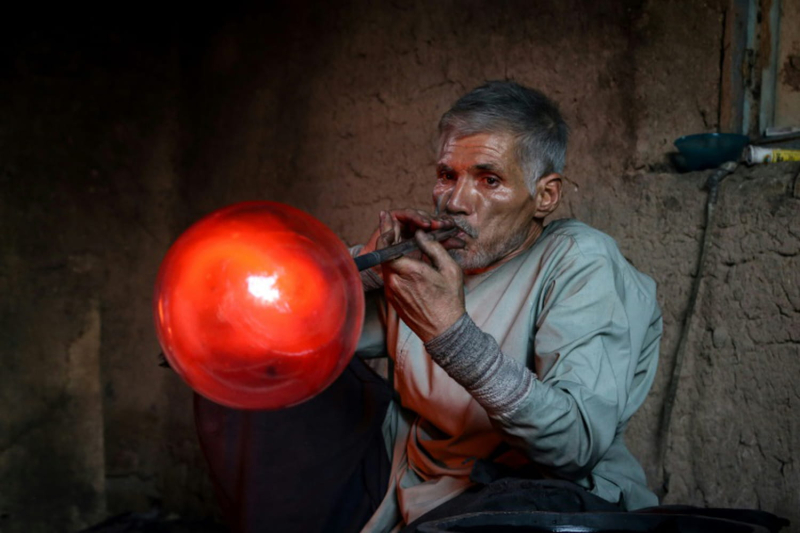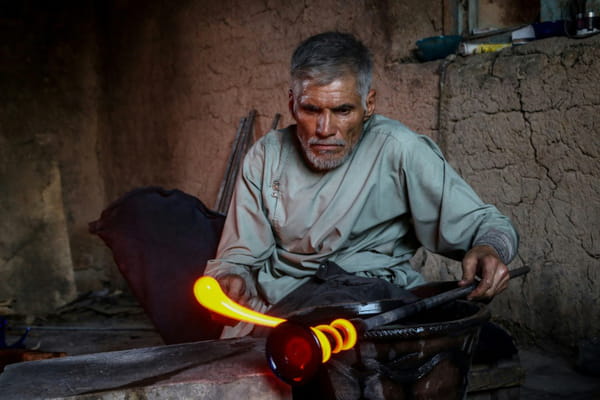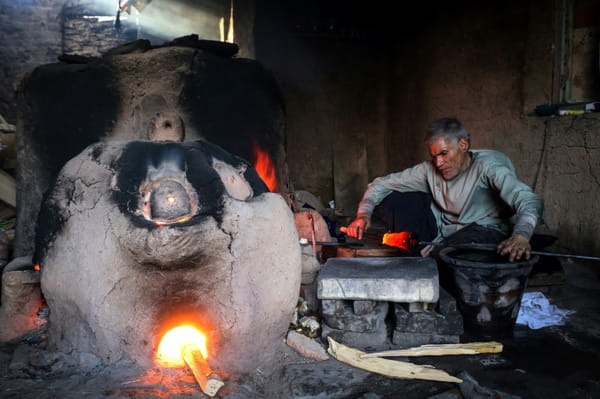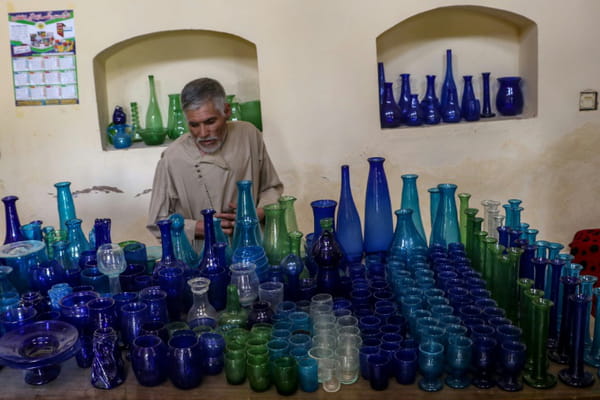Bent over the red-hot furnace, Ghulam Sakhi Saifi delicately works the molten blue material: he is one of the last artisans of the ancestral tradition of glassblowing in Afghanistan. “This is our art, our heritage. It has allowed us to eat for a long time,” says the artisan, his hands callused and his knuckles burnt. “We are trying to make sure that this does not fall into oblivion,” says Saifi, who thinks he is about 50 years old. The tradition of glassblowing in Herat, the great city in western Afghanistan, is said to go back centuries. Saifi says it has been his family's specialty for “only” about 300 years. His family home in a village near Herat and his workshop in the old city house the last two glassblowing furnaces in the metropolis near the Iranian border. The workshop is made of mud, covered with a roof that has a large opening, in the shadow of the Herat citadel. Saifi only starts his furnace in the city once a month. Once he has paid for the wood, coloring oxides and other raw materials, he only gets about 27 euros for his cups, plates and candlesticks. Ghulam Sakhi Saifi works with molten glass in his workshop on August 11, 2024 in Herat, Afghanistan © AFP – Mohsen KARIMI He explains the collapse of his business by the desertion of foreign customers during the Covid-19 epidemic, then the Taliban's reconquest of power in 2021 which caused almost all diplomats and NGO staff to flee. Imports of cheap blown glass from China also weighed. “We sometimes didn't work for three months,” he says. “Locals have no use for our creations, and for the price — nearly three euros each — they would first think of buying two loaves for their children,” says Saifi. – What future ? – But that day, the oven works. Armed with a crude kitchen knife and a blowing rod, Saifi removes pieces of shiny, molten glass from the furnace and blows them into beautiful pieces. Ghulam Sakhi Saifi works with molten glass in his workshop on August 11, 2024 in Herat, Afghanistan © AFP – Mohsen KARIMI While they once used quartz glass, today glassblowers use recycled, broken and overheated bottles that return to a liquid state. The green and blue pieces, with their charming imperfections, cool before being sold in shops in Herat or Kabul. It is 36 degrees outside, but as soon as you enter the workshop, you feel seized by the burning fever transmitted by the furnace. A small army of boys helps Saifi in his work, but it is increasingly difficult to attract young people to this craft that they consider to have no future. Glassblower Ghulam Sakhi Saifi shows glass objects in the shop of his workshop, on August 11, 2024 in Herat, Afghanistan © AFP – Mohsen KARIMI His eldest son had become an expert, but preferred to be a migrant worker across the Iranian border. Two cousins who had also been trained have put down their tools. His youngest son, Naqibullah, 18, says he wants to continue the craft, but he doesn't explain how. Before the Taliban returned, demand was high enough for three days of work a week. This is no longer the case, and the young man alternates work with his father on the rare days when the oven glows red. “We hope that there is a future and that things will gradually improve,” says Naqibullah. “Even if we don't earn much, the profession must continue. We can't let this know-how disappear.” All reproduction and representation rights reserved. © (2024) Agence France-Presse




